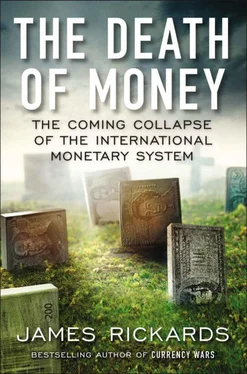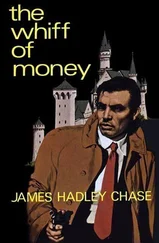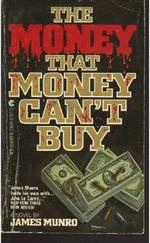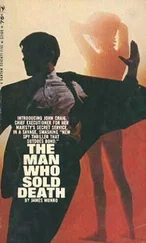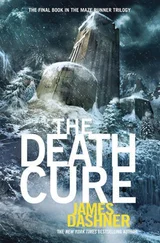A second implication is that the greatest catastrophe that can occur in a complex system is an exponential, nonlinear function of systemic scale. This means that as the system doubles or triples in scale, the risk of catastrophe is increasing by factors of 10 or 100. This is also why stress tests based on historic episodes such as 9/11 or 2008 are of no value, since unprecedented systemic scale presents unprecedented systemic risk.
The solutions to this systemic risk overhang are surprisingly straightforward. The immediate tasks would be to break up large banks and ban most derivatives. Large banks are not necessary to global finance. When large financing is required, a lead bank can organize a syndicate, as was routinely done in the past for massive infrastructure projects such as the Alaska pipeline, the original fleets of supertankers, and the first Boeing 747s. The benefit of breaking up banks would not be that bank failures would be eliminated, but that bank failure would no longer be a threat. The costs of failure would become containable and would not be permitted to metastasize so as to threaten the system. The case for banning most derivatives is even more straightforward. Derivatives serve practically no purpose except to enrich bankers through opaque pricing and to deceive investors through off-the-balance-sheet accounting.
Whatever the merits of these strategies, the prospects for dissolving large banks or banning derivatives are nil. This is because regulators use obsolete models or rely on the bankers’ own models, leaving them unable to perceive systemic risk. Congress will not act because the members, by and large, are in thrall to bank political contributions.
Banking and derivatives risk will continue to grow, and the next collapse will be of unprecedented scope because the system scale is unprecedented. Since Federal Reserve resources were barely able to prevent complete collapse in 2008, it should be expected that an even larger collapse will overwhelm the Fed’s balance sheet. Since the Fed has printed over $3 trillion in a time of relative calm, it will not be politically feasible to respond in the future by printing another $3 trillion. The task of reliquefying the world will fall to the IMF, because the IMF will have the only clean balance sheet left among official institutions. The IMF will rise to the occasion with a towering issuance of SDRs, and this monetary operation will effectively end the dollar’s role as the leading reserve currency.
These threats to the dollar are ubiquitous. The endogenous threats are the Fed’s money printing and the specter of galloping inflation. The exogenous threats include the accumulation of gold by Russia and China (about which more in chapter 9) that presages a shift to a new reserve asset.
There are numerous ancillary threats. If inflation does not emerge, it will be because of unstoppable deflation, and the Fed’s response will be a radical reflation of gold. Russia and China are hardly alone in their desire to break free from the dollar standard. Iran and India may lead a move to an Asian reserve currency, and Gulf Cooperation Council members may chose to price oil exports in a new regional currency issued by a central bank based in the Persian Gulf. Geopolitical threats to the dollar may not be confined to economic competition but may turn malicious and take the form of financial war. Finally, the global financial system may simply collapse on its own without a frontal assault due to its internal complexities and spillover effects.
For now, the dollar and the international monetary system are synonymous. If the dollar collapses, the international monetary system will collapse as well; it cannot be otherwise. Everyday citizens, savers, and pensioners will be the main victims in the chaos that follows a collapse, although such a collapse does not mean the end of trade, finance, or banking. The major financial players, whether they be nations, banks, or multilateral institutions, will muddle through, while finance ministers, central bankers, and heads of state meet nonstop to patch together new rules of the game. If social unrest emerges before financial elites restore the system, nations are prepared with militarized police, armies, drones, surveillance, and executive orders to suppress discontent.
The future international monetary system will not be based on dollars because China, Russia, oil-producing countries, and other emerging nations will collectively insist on an end to U.S. monetary hegemony and the creation of a new monetary standard. Whether the new monetary standard will be based on gold, SDRs, or a network of regional reserve currencies remains to be seen. Still, the choices are few, and close study of the leading possibilities can give investors an edge and a reasonable prospect for preserving wealth in this new world.
The system has spun out of control; the altered state of the economic world, with new players, shifting allegiances, political ineptitude, and technological change has left investors confused. In The Death of Money you will glimpse the dollar’s final days and the resultant collapse of the international monetary system, as well as take a prospective look at a new system that will rise from the ashes of the old.
PART ONE
MONEY AND GEOPOLITICS
One of our biggest fears is that something happens today, and when we do the autopsy we find that two weeks ago we had it, [but] we didn’t know because it was buried in something else that wasn’t getting processed.
B. “Buzzy” Krongard CIA executive director September 1, 2001
The unconditional evidence supports the proposition that there was unusual trading in the option markets leading up to September 11, which is consistent with the terrorists or their associates having traded on advance knowledge of the impending attacks.
Allen M. Poteshman University of Illinois at Urbana-Champaign 2006
Never believe anything until it has been officially denied.
Claud Cockburn British journalist
“No one trades alone.” An axiom of financial markets, this truism means that every trade leaves transaction records there to be seen. If one knows where to look and how to examine the history and data, much can be learned not only about quotidian sales of stock by the obvious players, large and small, but about more troubling truths and trends. The market evidence surrounding 9/11—most of which is little understood by the public—is a case in point.
The secure meeting rooms at the CIA’s Langley headquarters—windowless, quiet, and cramped—are called “vaults” by those who use them. On September 26, 2003, John Mulheren and I were seated side by side in a fourth-floor vault in the headquarters complex. Mulheren was one of the most legendary stock traders in Wall Street history. I was responsible for modeling terrorist trading for the CIA, part of a broad inquiry into stock trading on advance knowledge of the 9/11 attacks.
I looked in his eyes and asked if he believed there was insider trading in American Airlines stock immediately prior to 9/11. His answer was chilling: “It was the most blatant case of insider trading I’ve ever seen.”
Mulheren started his stock trading career in the early 1970s and, at age twenty-five, became one of the youngest managing directors ever appointed at Merrill Lynch. He was found guilty of insider trading in 1990 as part of the trading scandals of the 1980s, but the verdict was overturned on appeal. His conviction was based on testimony provided by Ivan Boesky, himself a notorious insider trader. During the case, Mulheren had been apprehended by police at his Rumson, New Jersey, estate as he set out with a loaded assault rifle in his car to kill Boesky in broad daylight.
Читать дальше
